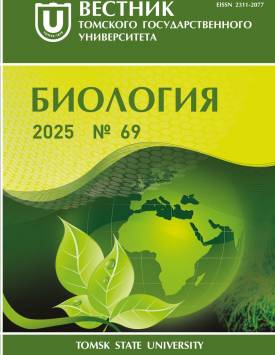In vitro models of proteinopathy-associated neurodegenerative diseases
Most neurodegenerative diseases are caused by proteinopathies associated with accumulation of misfolded protein aggregates in neurons - synuclein in Parkinson's, amyloid in Alzheimer's, huntingtin in Huntington's, etc. This leads to lysosomal dysfunction, mitochondrial dysfunction and ultimately cell death. To study the pathological processes leading to neuronal death, we have generated cell models with doxycycline-controlled expression of alpha-synuclein (SNCA) containing 3xFLAG and 2xStrep-Tag II epitopes necessary for affine purification of protein complexes interacting with alpha-synuclein. The induced pluripotent stem cell (iPSC) line from a patient with Parkinson's disease m10.7 was chosen as the starting line to create a cell model of the synucleopathy. This line is registered in the hPSCreg human pluripotent stem cell registry as ICGi041-A. Transgenes encoding the chimeric protein SNCA-C-3×FLAG-2×ST and the transactivator M2rtTA were introduced into the AAVS1 locus of the m10.7 iPSCs line using the CRISPR/Cas9 genome editing system. The pluripo-tent status of the resulting transgenic iPSC clones was confirmed and directed differentiation into neurons was performed (See Fig. 1a-b). The expression of SNCA-C-3×FLAG-2×ST in neurons differentiated from IPSCs was demonstrated by Western analysis (See Fig. 1с). The cell models obtained have the ability to proliferate indefinitely in culture. This makes it possible to design experiments to study the interactions of alpha-synuclein with different proteins and structures in human cells with synu-cleinopathies, as well as to test potential drugs on any type of human body cell that can be obtained as a result of directed differentiation of iPSCs. The article contains 1 Figure, 12 References. The Authors declare no conflict of interest.
Keywords
iPSC-based cell models, proteinopathy, alpha-synuclein, neurodegenerative diseases, CRISPR/Cas9Authors
| Name | Organization | |
| Malakhova Anastasia A. | Institute of Cytology and Genetics, Siberian Branch of the RAS; Institute of Chemical Biology and Fundamental Medicine, Siberian Branch of the RAS | amal@bionet.nsc.ru |
| Allayarova Elina R. | Institute of Cytology and Genetics, Siberian Branch of the RAS; Novosibirsk State University | e.allayarova@g.nsu.ru |
| Sharipova Dinara V. | Institute of Cytology and Genetics, Siberian Branch of the RAS; Novosibirsk State University | d.sharipova@g.nsu.ru |
| Pavlova Sophia V. | Institute of Cytology and Genetics, Siberian Branch of the RAS; Institute of Chemical Biology and Fundamental Medicine, Siberian Branch of the RAS | spav@bionet.nsc.ru |
| Grigor’eva Elena V. | Institute of Cytology and Genetics, Siberian Branch of the RAS; Institute of Chemical Biology and Fundamental Medicine, Siberian Branch of the RAS | evlena@bionet.nsc.ru |
| Medvedev Sergey P. | Institute of Cytology and Genetics, Siberian Branch of the RAS; Institute of Chemical Biology and Fundamental Medicine, Siberian Branch of the RAS | medvedev@bionet.nsc.ru |
| Zakian Suren M. | Institute of Cytology and Genetics, Siberian Branch of the RAS; Institute of Chemical Biology and Fundamental Medicine, Siberian Branch of the RAS | zakian@bionet.nsc.ru |
References

In vitro models of proteinopathy-associated neurodegenerative diseases | Vestnik Tomskogo gosudarstvennogo universiteta. Biologiya - Tomsk State University Journal of Biology. 2025. № 69. DOI: 10.17223/19988591/69/12
